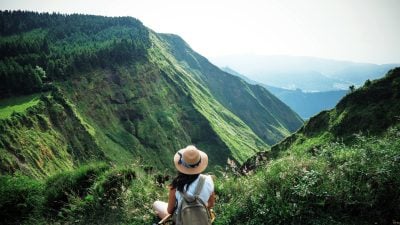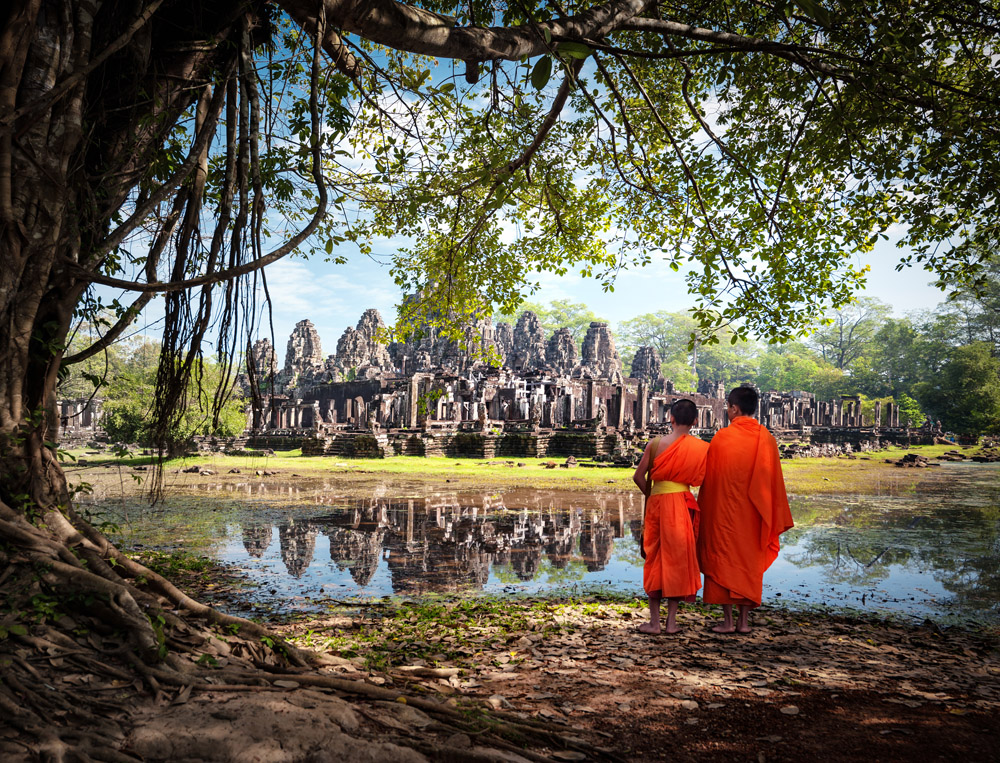
What Wat? Understanding Asian Places of Worship
For any traveller visiting Asia, they no doubt will discover a rich world of fascinating history, religion, and culture. After a few days of sightseeing, however, sometimes the information can be overwhelming, especially for visitors who don’t know the lingo. In regards to religious monuments, here is an explanation on how to better understand the difference between a Stupa, Pagoda, Wat and Temple… four places of worship that travellers will encounter on many Asia travel itineraries.

Stupa
A dome-shaped structure erected as a Buddhist shrine, commonly found in Indonesia, Cambodia, India, Sri Lanka, Nepal*, Tibet, and Thailand.
The shape of the stupa represents the Buddha, crowned and sitting in meditation posture on a lion throne.
A renowned stupa is the main one crowning Borobudur Temple – the largest Buddhist structure in the world. A UNESCO World Heritage site, Borobudur is located in Java, Indonesia, and can be visited as part of an itinerary or extension.
Recommended Itineraries:
7-Day Java in Depth
2-Day Borobudur Extension
7-Day Bali to Jakarta

Pagoda
A tiered-tower with multiple eaves commonly found in India, China, Japan, Korea, Vietnam, and Nepal*.
Many pagodas have a decorated vertical finial with a symbolic Buddhist meaning (e.g. a lotus). The finial also acts as a lightning rod which gives the tower a perception of being ‘spiritually charged’.
Thien Mu Pagoda, built in 1601, is a historic temple in the city of Hue in Vietnam. A UNESCO World Heritage site, its pagoda has seven stories and is the tallest in the country.
Recommended Itineraries:
3-Day Historical Hue
8-Day Classic Vietnam
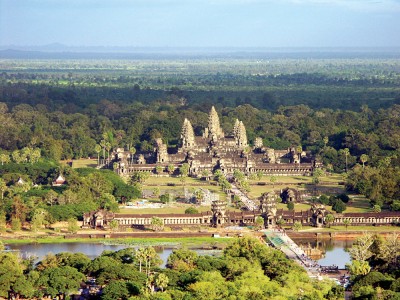
Wat
A monastery temple commonly found in Cambodia, Thailand, and Laos.
Angkor Wat is the most famous wat located in Siem Reap, Cambodia. This wat is a component of a temple complex at Angkor, built for King Suryavarman II in the early 12th century and is one of the most visited archaeological and artistic sites on the planet.
Recommended Itineraries:
9-Day Classic Cambodia
3-Day Amazing Angkor Wat
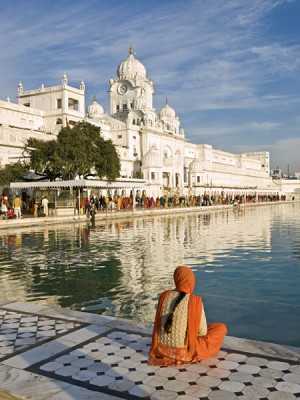
Temple
A structure reserved for religious or spiritual activities.
Now widely used to describe a house of worship for a number of religions, temples are found all across Asia. Therefore, a Buddhist temple would include a stupa, wat, and pagoda.
Amritsar is home to the Golden Temple, one of the most attractive tourist destinations in India and often a site of pilgrimage. Amritsar, meaning “holy pool of nectar”, is the spiritual and culture centre of the Sikh religion.
Recommended Itineraries:
3-Day Amritsar Golden Temple
*Given the recent earthquake in Nepal, many visitors are wondering about the condition of some of these magnificent monuments. Please note that only 15 of the 75 districts in Nepal were affected by this tragedy. The following stupa and pagoda are just two small examples of what has survived in Nepal.
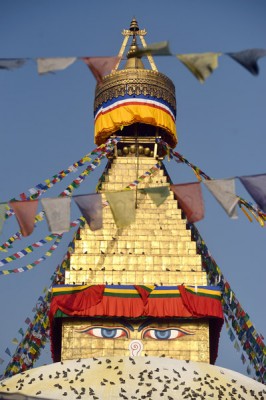
Bouddhanath Stupa
The Buddhist stupa of Boudhanath dominates the skyline and is one of the largest in the world. The influx of large populations of refugees from Tibet has seen the construction of over 50 Tibetan gompas (monasteries) around Boudhanath. Listed as a UNESCO World Heritage site in 1979, Boudhanath is one of the most popular tourist sites in the Kathmandu area.

Nyatapola Pagoda Temple Bhaktapur
This 5-story pagoda is located in Bhaktapur. The temple was erected by Nepali King Bhupatindra Malla during a 5-month period from late 1701 to 1702. It is the temple of Siddha Laxmi, the Hindu goddess of prosperity.
Get more travel inspiration by email.
Subscribe
0 Comments

Get the latest travel trends & hear about the best deals on vacations around the world.
If you’re a Globetrotter, these are the newsletters for you!

